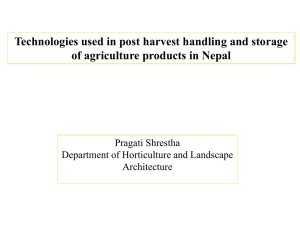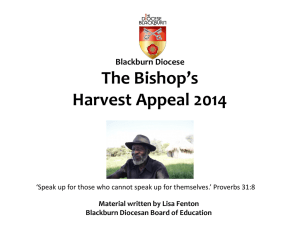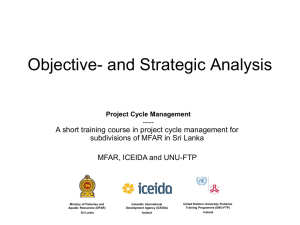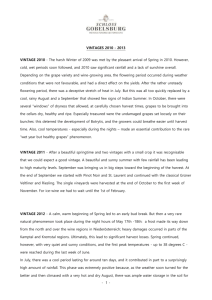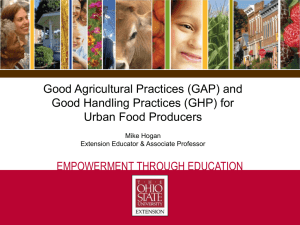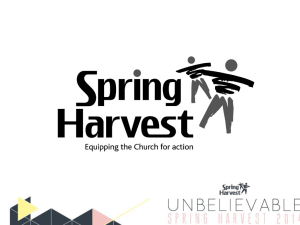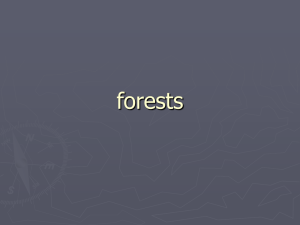Ecosystem scale - IGB Conferences
advertisement
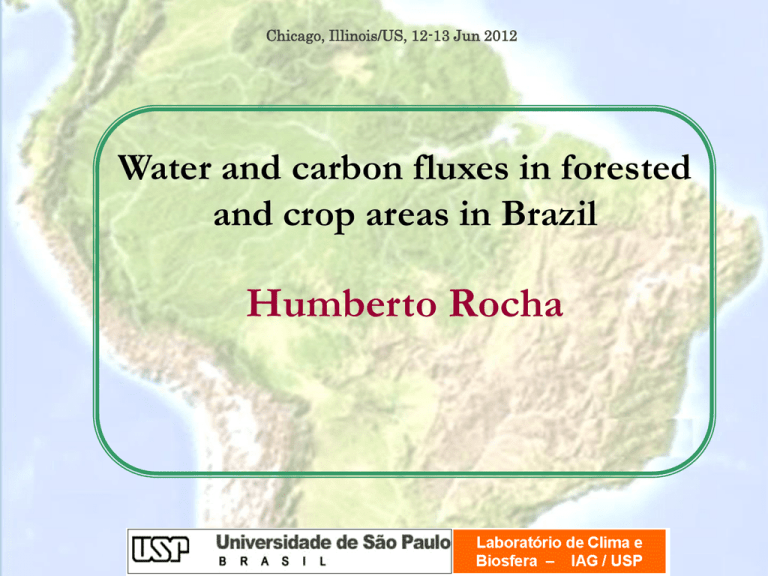
Chicago, Illinois/US, 12-13 Jun 2012 Water and carbon fluxes in forested and crop areas in Brazil Humberto Rocha 1. Description of climate and croplands 2. Measurements of ET, GEP and albedo 3. Deforestation feedback in rainfall 4. Peak flows and load discharge in cropland streams 1. Climate 3 Critical patterns of water availability Fonte: ANA – Conjuntura Recursos Hídricos do Brasil 2. Main crops – area, productivity Sugar cane Soybean Corn Rice The forest protection code legislation (1965) statements: Legal reserve (RL) Permanent Protected Areas (APP) Law enforcement (2005) 3. Flux tower sites in forested areas Flux tower over sugar cane, cerrado and eucaliptus plantation (MogiGuaçu watershed – state of São Paulo) ET and GEP across a forest-cerrado biome transition Pc Pc -1 max 1 0.8 0.6 0.4 0.2 (fraction of max) with days since start of dry season Equatorial forests Equatorial forests Tropical seasonal forests Savanna & Pasture GEP GEP-1 max Evapotranspiration (fraction of max) 0Gross Ecosystem Productivity 30 60 90 120 150 180 210 240 270 300 330 360 1 0.8 0.6 0.4 Tropical seasonal forests 0.2 0 Savanna & Pasture 30 60 90 120 150 180 210 240 270 300 330 360 No. days since dry season starts CO2 flux – tropical forest Santarem (k83 site) CO2 fluxes: annual sum is prone to uncertainties Miller 2004, Ecol Appl; Goulden 2004 Ecol Appl, 2006 JGR Saleska 2003, Science; Hutyra 2007 JGR Reco ~ nighttime flux GPP ~ daytime flux – Reco • • High numbers are observed in the tropics Miller 2004, Ecol Appl Reco u*filtered Reco Dry season Wet season sink loss ... but leads to a reasonable interpretation of seasonality GPP The ability of forest vegetation to reach soil moisture and depend on its variability is a key step to understand the ecosystem resilience Soil moisture pumped from trees at different depths (% of daily totals) Soil moisture measurement with Time Domain Reflectometry Dry season 84% at 7m Rainfall inhibition Previous modelling sudies suggested that large scale deforestation in Amazonia may lead to a reduction in rainfall and impact the ecosystem, but the investigation over small areas is still a less known matter. This numerical experiment used: BRAMS atmospheric model w/ 3 nested grids (64,32,08 km of horizontal resolution) Deforestation strip Rainfall enhancement Changes varied from 10 to 30 % Global Solar Albedo over sugar cane plantation – measurements in 3 different harvest types (Cabral et al 2011, and unpublished data) Harvest (bars) 1997-1999 – harvest in Apr/May, dry leaves burning, manual harvest (unpublished) 2001-2002 harvest in Sep/Out, green harvest w/ mulching (unpublished) 2005-2007 harvest in Apr/May, burning dry leaves, mechanical harvest (Cabral et al 2011) Média no período chuvoso Measured mean ET and above canopy temperature (Source: Tatsch, J. (2012) PhD thesis USP and unpublished data) Temperatura do ar acima da copa (oC) cana-de-açúcar Cerrado eucalipto 30 28 26 24 22 20 18 0 3 6 9 12 15 18 21 24 hora do dia ET simulatied w/ modified-SiB2 model) Rainfall runoff modelling (DBHM/SiB2) at MogiGuaçu watershed. Source: Tatsch, J. (2012) PhD thesis USP Current Land Cover APP_reforest (Permanent Protected areas) Cerrado lower sugar cane higher Eucaliptus intermediate Final statements Brazil ranks 8th in global economy - Agrobusiness ~ 1/3 GDP and ½ jobs Very competitive ethanol (10 units of energy/1 unit of fossil fuel used) Large potential crop expansion with strong concern on environmental sustainability University of São Paulo seeks for partnerships which helps to quantify the ecosystem services and identify ways for their economical internalization with regional and global benefits Thanks – contact HUMBERTO@MODEL.IAG.USP.BR


